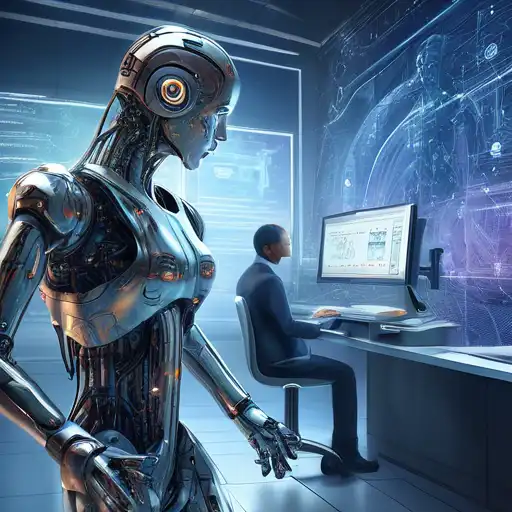Introduction to AI and Machine Learning
In the rapidly evolving world of technology, Artificial Intelligence (AI) and Machine Learning (ML) are two terms that often come up in conversations about the future of computing and automation. While they are closely related, they are not the same thing. This article aims to demystify these concepts and highlight the key differences between them.
What is Artificial Intelligence?
Artificial Intelligence is a broad field of computer science focused on creating systems capable of performing tasks that typically require human intelligence. These tasks include problem-solving, recognizing speech, learning, planning, and understanding natural language. AI can be categorized into two types: Narrow AI, which is designed to perform a narrow task (e.g., facial recognition or internet searches), and General AI, which can perform any intellectual task that a human being can.
What is Machine Learning?
Machine Learning is a subset of AI that provides systems the ability to automatically learn and improve from experience without being explicitly programmed. ML focuses on the development of computer programs that can access data and use it to learn for themselves. The process of learning begins with observations or data, such as examples, direct experience, or instruction, to look for patterns in data and make better decisions in the future based on the examples that we provide.
Key Differences Between AI and Machine Learning
- Scope: AI has a broader scope than ML. AI is about creating intelligent machines that can simulate human thinking capability and behavior, whereas ML is about machines learning from data.
- Purpose: The purpose of AI is to create systems that can function intelligently and independently, while ML enables machines to learn from data so they can provide accurate output.
- Dependency: AI systems do not necessarily have to learn from data; they can be rule-based. ML, on the other hand, is entirely dependent on data.
- Applications: AI is used in a wide range of applications, from robotics to natural language processing. ML is primarily used in applications where the system needs to learn from and make predictions on data.
How AI and Machine Learning Work Together
Despite their differences, AI and ML often work together to create sophisticated systems. For example, AI can be used to create a chatbot that simulates human conversation, while ML can be used to improve the chatbot's responses over time based on user interactions. This synergy between AI and ML is driving innovation across industries, from healthcare to finance.
Conclusion
Understanding the difference between AI and Machine Learning is crucial for anyone looking to delve into the field of technology. While AI is the broader concept of machines being able to carry out tasks in a way that we would consider "smart," ML is a current application of AI based around the idea that we should be able to give machines access to data and let them learn for themselves. As technology continues to advance, the line between AI and ML may blur, but their foundational differences will remain important for future developments.
For more insights into the world of technology and data science, explore our Tech Trends section.
